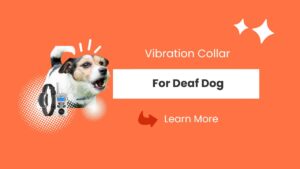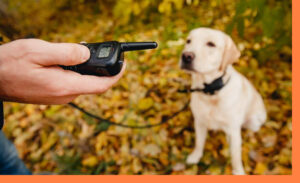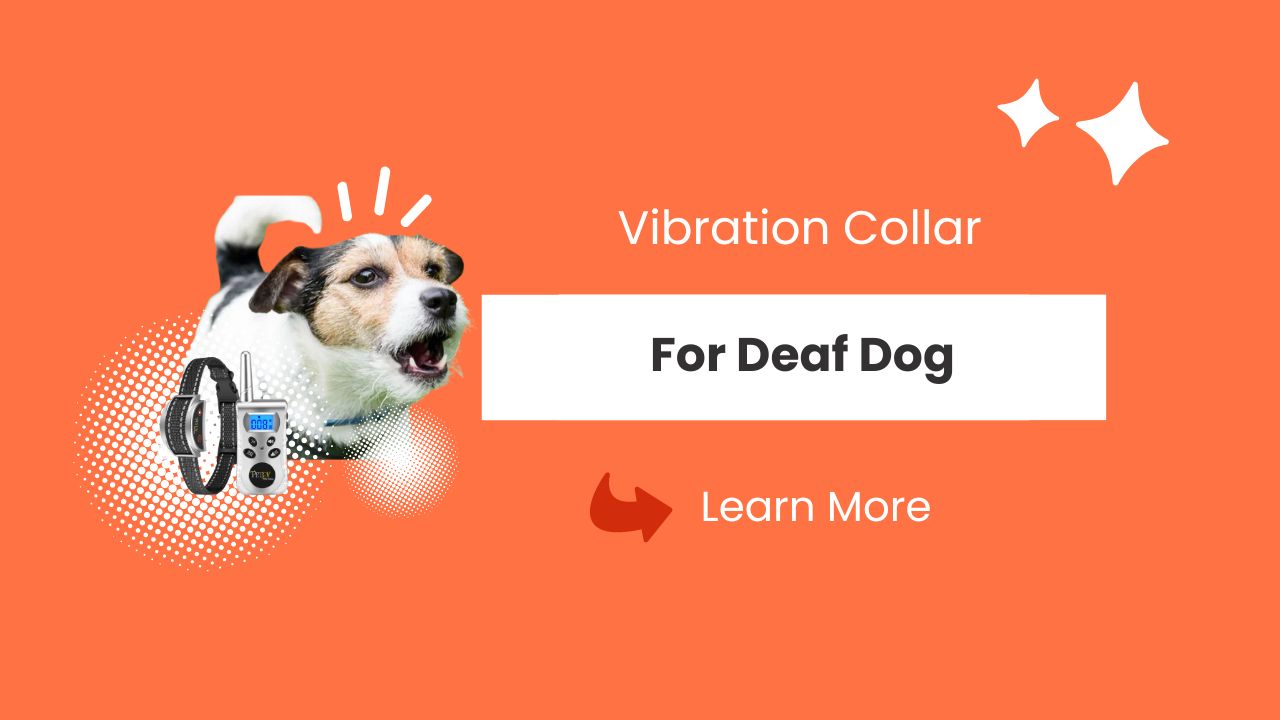In a world where dogs are often considered as friend, the challenges faced by deaf dogs can be heart-wrenching. These specially-abled pups may struggle to interact, follow commands, and stay safe without the gift of hearing. Fortunately, technology has come to the rescue with innovative solutions like the “Vibration Collar.”
This article explores Vibration Collar For Deaf Dog and how vibration collars are revolutionizing the lives of deaf dogs and their owners, providing a humane and effective means of communication
Understanding Deaf Dogs:
Before delving into vibration collars, it’s crucial to understand the unique challenges faced by deaf dogs.
Deafness in dogs can either be something they were born with or something they developed later in life. When dogs can’t hear, they depend a lot on their other senses like seeing and smelling to get around and understand things.
But sometimes, this can make things like training and staying safe a bit tricky for them.
What is a Vibration Collar?
A vibration collar is a specialized dog training tool designed primarily for deaf dogs but can be useful for hearing dogs as well. It operates on the principle of using gentle vibrations as a form of communication with your dog.
This collar sends a vibration signal to your dog, alerting them to your commands or notifications.

Understanding Your Deaf Dog’s Needs
When it comes to caring for your deaf dog, communication is key. Vibration collars have emerged as a game-changing tool in this endeavor, allowing you to connect with your canine companion on a whole new level.
Size and Comfort
Just like humans, dogs come in various shapes and sizes. It’s vital to choose a vibration collar that fits comfortably around your dog’s neck without causing discomfort or irritation. Look for adjustable straps to ensure a snug yet gentle fit.
Sensitivity Levels
Different dogs have different levels of sensitivity to vibrations. Some may respond to gentler vibrations, while others may require a slightly stronger signal. Opt for a collar with adjustable sensitivity levels so that you can customize the experience for your dog.
Durability and Water Resistance
Active dogs love to explore, and that often involves getting dirty or wet. Ensure that the collar you choose is durable and water-resistant, so it can withstand your dog’s adventures without losing functionality.
Is It Worth Using Vibration Collar For Deaf Dog
Using a vibration collar for deaf dogs is something we should think about carefully. These collars can be helpful for communicating with a dog that can’t hear.
They send gentle signals to the dog, kind of like tapping on their shoulder, to give commands or warnings. This can make training easier and keep them safe in different situations.
But it’s super important to use these collars the right way. You should get advice from a dog expert, like a trainer or vet, to use them properly. When used correctly, they can be a great tool for training and taking care of deaf dogs.
However, relying only on the collar and not using other training methods might not be a good idea. So, whether it’s worth using a vibration collar depends on how you use it and your dog’s needs.
Advantages of Using Vibration Collar For Deaf Dog
Non-Verbal Communication:
- Vibration collars offer a non-verbal way to communicate with your deaf dog. You can convey commands, signals, or warnings without uttering a word, making it easier for your dog to understand your expectations.
Effective Training Tool:
- These collars are fantastic for training deaf dogs. Whether you want to teach basic commands, recall, or discourage unwanted behaviors, the precise and consistent feedback provided by vibration collars can be invaluable.
Enhanced Safety:
- In situations where your deaf dog needs to be aware of potential dangers, such as crossing the street or avoiding wildlife, vibration collars can alert them without causing unnecessary stress or confusion.

Choosing the Right Vibration Collar for Deaf Dog
When selecting a vibration collar for your deaf dog, consider the following factors:
Comfort and Fit:
- Ensure the collar is comfortable and fits properly to prevent any discomfort for your dog.
Adjustable Settings:
- Look for collars with customizable vibration settings to suit your dog’s needs.
Durability:
- Opt for a collar that is durable and water-resistant, as dogs can be quite active and may get the collar wet.
Battery Life:
- Check the collar’s battery life to ensure it lasts throughout the day without frequent recharging.
Using Vibration Collars Responsibly
Proper Training:
To ensure your deaf dog responds correctly to the vibrations, it’s crucial to train them patiently and consistently. Start with basic commands and gradually progress to more complex tasks.
Positive Reinforcement:
Always pair the vibrations with positive reinforcement, such as treats or affection. This will help your dog associate the vibrations with desired behavior.
Consult a Professional:
Consider seeking guidance from a professional dog trainer who has experience working with deaf dogs. They can provide expert advice on using vibration collars effectively.
Basic Deaf Dog Training Commands
Start with these fundamental commands and build upon them as your dog progresses:
Sit:
- Use a clear, upward hand motion, typically with an open palm facing up. Pair it with the verbal command “sit” if you wish.
Stay:
- Extend your flat hand, palm facing the dog, and hold it steady. Gradually increase the distance and duration as your dog becomes more proficient.
Come:
- Wave your hand toward your chest in a beckoning motion. Reward your dog enthusiastically when they approach you.
Down:
- Point your hand toward the ground, parallel to the floor. Start with the dog in a sitting position and gently guide them down.

Advanced Training for Deaf Dogs
Once your deaf dog has mastered the basics, you can explore more advanced training:
Recall Off-Leash:
- Practice off-leash recall in a secure, fenced area. Use visual signals and reward generously when your dog returns.
Tricks and Agility:
- Teach fun tricks or engage in agility training to keep your dog mentally stimulated and physically active.
Socialization:
- Regularly expose your deaf dog to new environments, people, and other dogs to ensure they are well-socialized and confident.
Training Tools and Aids
Consider using the following tools to facilitate training:
Vibrating Collars:
- As mentioned in our previous guide, vibrating collars can be a valuable tool for signaling commands to deaf dogs.
Visual Aids:
- Flashlights or laser pointers can help direct your dog’s attention during training sessions.
Treats and Toys:
- High-value treats and interactive toys can serve as powerful motivators during training.
Conclusion:
In the world of dog training and communication, vibration collars stand out as a remarkable tool, especially for deaf dogs.
They offer a safe, effective, and humane way to interact with and protect your furry family member. Remember, every dog is unique, so it’s essential to consider their specific needs when deciding whether a vibration collar is the right choice.

